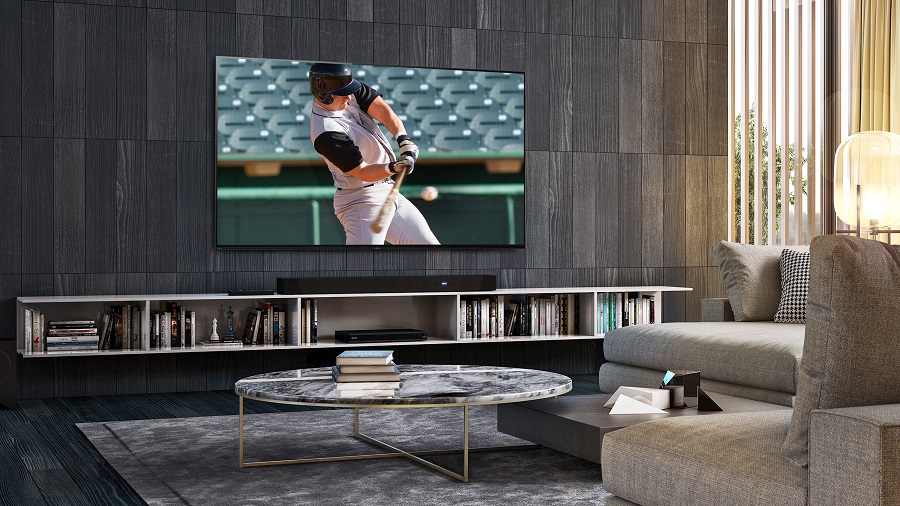OLED or LED TV: Which Is Best for Your Home?
Find Out How the Two Technologies Differ, and Why It Matters

If you are in the market for a new television to add to your smart home automation system, you may have come across ads for LED and OLED models. After reading some of the specifications, you may have a number of questions. Is one better than the other, and is the price difference really worth it? Should I have different TV technologies for different uses in my home?
At first glance, the two products appear to be identical, so just what is all the ballyhoo about? While each technology has its benefits, the differences come down to brightness, refresh rates, black levels, and screen size. Let’s break down the two and determine which is best for your smart home in Greenwich, CT.
SEE ALSO: Cutting-Edge Technology for an Unsurpassed Viewing Experience
What Is in a Name?
Both LED and OLED televisions use Lighting Emitting Diode technology similar to those you see on toys and equipment, only smaller and tightly packed together. Not all LEDs are equal in their capability to produce light or turn on and off quickly. This factor, combined with the density of bulbs, determines the quality of the image.
A standard LED TV uses the LED components to illuminate the LCD screen with the actual colored dots on it to make the pixels. Changing which LED lamps are lit in each section generates the colors to make up the image. The process allows for bright high-definition images in thin frames, perfect for mounting in media rooms.
The ‘O’ in OLED signifies an organic material that generates light (or becomes emissive) when electricity is run through it. Each bulb produces its own light and color from a single diode, eliminating the need for a persistent backlight like those in LED monitors. Image pixels are created by switching the dense collection of diodes. The thin sheets are more flexible, allowing them to be bent and even rolled - the result is much thinner housing and bezels.
Determining Factors
Understanding how the two technologies work leads us to the question of which performs better. When rating the quality of any imaging technology, we look at traits such as contrast, brightness, and viewing angles. Other factors such as lifespan and the effects of continual use also play a big part in assessing preference. OLEDs, in general, are considered to create a better image overall, though the victory is only by a small margin. However, that slight difference may be significant to avid movie watchers.
Advantage OLED
OLEDs carry the advantage in black levels, refresh rates, and viewing angles. The ability of a display to generate deep, dark blacks allows for higher contrast ratios and more vibrant colors. LEDs with their backlight cannot go completely dark, which causes an effect called light bleed. The result is a haze that blends into darker colors. When you are watching a movie on larger home theater screens, this becomes quite evident.
The refresh rate refers to the speed with which the display changes from one state to another: the faster the change, the more seamless the transition and a clearer picture. OLED has color and light source in one diode; the difference between color and brightness is incredibly quick.
When setting up a room or outdoor space for viewing, you need to consider how far off-axis people can see the image. The viewing angle determines just how far off-center someone can see the image with reasonable clarity and quality. LED TVs max out at over 50% off-axis, while OLED can manage up to 84%.
Advantage LED
While OLED has many advantages, LED does hold a few cards in its favor: namely size and brightness.
Because an LED TV uses powerful and large lamp elements to light up the LCD screen, the TVs can produce and sustain much brighter images for more extended periods of time. OLED, in comparison, produces more than adequate brightness but can have a shorter lifespan when used at maximum brightness for extended periods.
If size matters to you, then LED has a clear advantage. In recent years OLED has been able to reach 83” screens, but this is currently the top limit of the technology. LED, on the other hand, easily manages much bigger displays for less money than OLED.
The Choice Is Yours
Specifications and measurements can help you determine which technology reads best on paper, but in the end, it is your eyes, budget, and expectations that matter most.
Are you looking to update your home's AV with a new television? You can always visit our showroom and work with our technology professionals to demo and discuss display options, mounting, and integration into your smart home automation system.
For more information or to schedule a free consultation, start today by reaching out here or calling (203) 338-0706.



